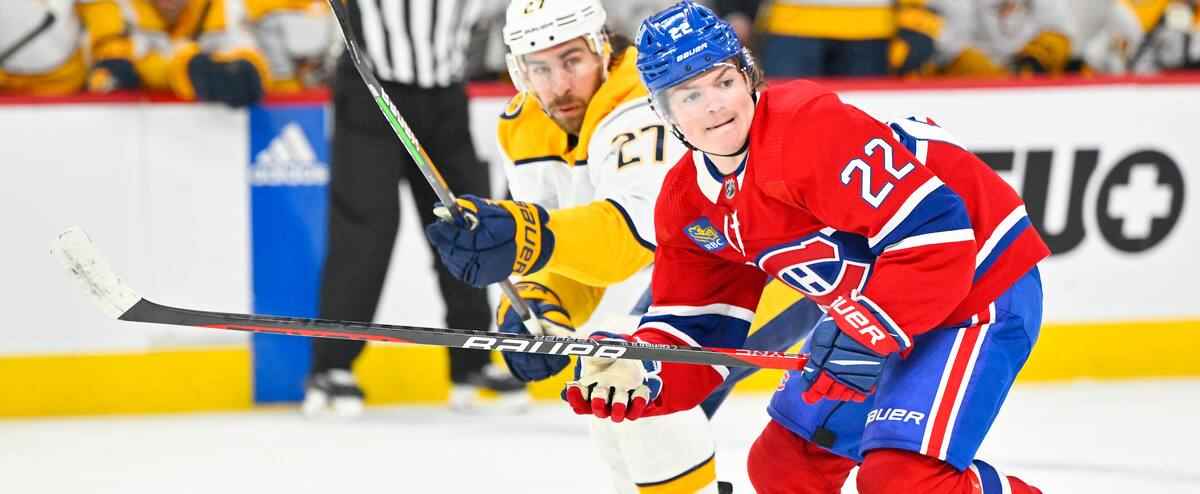Josh Anderson’s voice was dead as he spoke of the loss of his teammate, Cole Caufield. We felt he was eaten up by emotions on Saturday morning before the game against the Toronto Maple Leafs.
• Read also: Canadian: the victory of work and emotion
• Read also: Canadian: Cole Caufield will miss the rest of the season
Inside the Canadiens locker room, Anderson is one of those who can fully understand what Caufield will be going through in the coming months.
The CH dropped the equivalent of a bombshell in the hockey world by announcing that Caufield’s season was already over. Injured in the right shoulder, he will undergo an operation in the near future.
“I spoke with Cole a bit before practice. He is positive. He knows he will come back 100% and he will feel better. »
“After I had surgery, my left shoulder was stronger than my right. He liked to hear that bit. I have confidence that he will score even more goals. He will come back stronger. »
Anderson is not a doctor. But the big right winger knows all about shoulder surgery.
In 2019-20, when he wore the colors of the Columbus Blue Jackets, he went under the knife for a tear in the labrum in his left shoulder.
Anderson had been playing for nearly a month before finally throwing in the towel. He had needed a seven-month rehabilitation period before he regained full strength with his shoulder.
Caufield could now follow a similar route. He will need a long period of rest before becoming a threat again near an opposing net.
Return to 100%
Cole Caufield had been dragging this discomfort for a long time.
“It had been two or three months since he had an injury which was tiring him and which meant that he was not at 100%, confided Pat Brisson, Caufield’s agent, on TVA Sports. It’s a buildup, it’s happened a few times that his shoulder would come off. In his case, it didn’t hurt too much, but we wanted to do prevention so that it wouldn’t be worse and he would miss the start of the next season. There, we are 100% or 99.9% convinced that the operation will go well and that he will be able to return to camp next fall. »
The forward hadn’t missed a single game this season. He also participated in training, not getting the famous therapeutic leave.
Dr. Éric Schlader, an orthopedic surgeon who is affiliated with Saint-Eustache Hospital, sheds some important light.
“There are athletes who can be fine even with a dislocated shoulder,” he explains in an interview with the Log. In contact sports such as hockey or football, anterior dislocation of the humeral head from the glenoid surface (a portion of the scapula) is a common injury. Recurrent dislocations are frequent and may require surgical stabilization. »
“Between episodes of dislocation, athletes can feel great. But it can happen a trivial gesture and the shoulder still comes out, but it suddenly hurts a lot. After three or four episodes where the shoulder lands, you don’t really have the choice to intervene, ”he adds.
Six-month reconditioning
Reading about Caufield’s injury and listening to Anderson’s comments, Dr. Schlader has a feeling that number 22 also suffered a torn labrum in his right shoulder.
“Anderson had a labral tear repair,” recalled the specialist in arthroscopic surgery as well as shoulder and knee reconstruction. Doctors may have obtained recent magnetic resonance imaging for Caufield’s shoulder and they’ve brought the injury to light. »
“If the tear is more extensive, including the anterior labrum, there is a risk of another dislocation in the future. Rehabilitation is all the more important after the operation. A return to play should not be rushed before having completely regained control of the stabilizing muscles of the shoulder. »
A six-month reconditioning is therefore to be considered before resuming training with contacts.
A reference to golf
Dr. Schlader made a comparison with golf to popularize the whole thing.
“You have to imagine the shoulder like a golf ball on a tee. With a semi-rigid fabric padding [le labrum] around the tee which helps keep the head of the humerus centered in the joint. In the case of the anterior labrum, the ligaments attach to it and prevent dislocation of the shoulder. Fixing the labrum helps stabilize the ball off the tee. »
Caufield and CH officials will pray now that the little white ball doesn’t move too much off the tee in the future.
